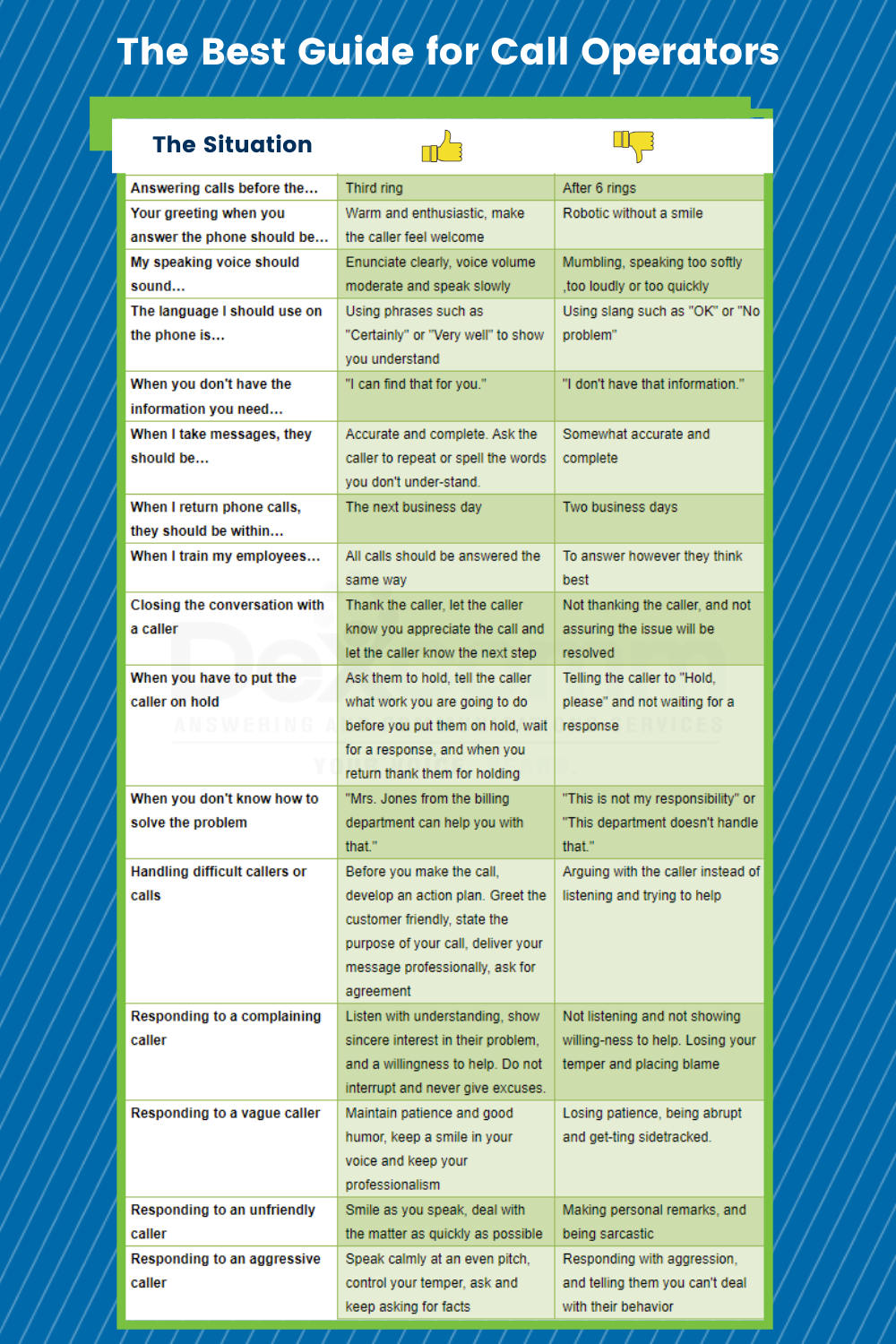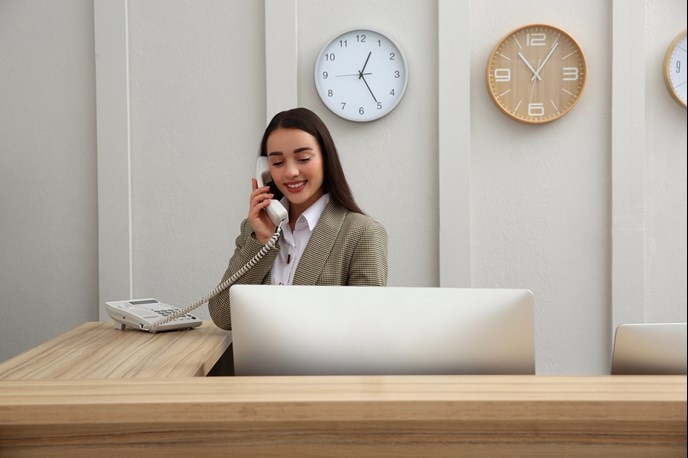All Categories
Featured
Table of Contents
- – Best 24/7 Phone Answering - Au-based Operators ...
- – What Are The Best Call Answering Service Brand...
- – What Is The Best Automated Answering Services ...
- – Who Is The Best The Benefits Of Secretarial A...
- – Best Telephone Answering Service - Answer My ...
- – What Is The Best Telephone Answering Service...
Best 24/7 Phone Answering - Au-based Operators - Alltel Australia To Buy
This device and its followers were developed by Sava Jacobson, an electrical engineer with a personal consulting business. While early voice mail used magnetic tape technology, many modern equipment uses solid state memory storage; some devices utilize a combination of both, with a solid-state circuit for the outgoing message and a cassette for the incoming messages.
"toll saving" listed below) (virtual call answering service). This is useful if the owner is evaluating calls and does not wish to talk with all callers. In any case after going, the calling party needs to be notified about the call having actually been responded to (in many cases this begins the charging), either by some remark of the operator, or by some greeting message of the TAD, or dealt with to non-human callers (e.
This holds particularly for the Littles with digitally kept greeting messages or for earlier machines (prior to the increase of microcassettes) with a special unlimited loop tape, different from a second cassette, committed to recording. There have actually been answer-only devices without any recording capabilities, where the greeting message had to inform callers of a state of existing unattainability, or e (virtual call answering service).
What Are The Best Call Answering Service Brands To Buy

about schedule hours. In tape-recording Littles the greeting usually includes an invitation to leave a message "after the beep". A voice mail that uses a microcassette to tape messages On a dual-cassette answerphone, there is an outgoing cassette, which after the specified variety of rings plays a pre-recorded message to the caller.

Single-cassette voice mail consist of the outgoing message at the start of the tape and inbound messages on the remaining space. They first play the announcement, then fast-forward to the next available space for recording, then tape-record the caller's message. If there are numerous previous messages, fast-forwarding through them can cause a considerable hold-up.
This beep is typically referred to in the greeting message, asking for that the caller leave a message "after the beep". Littles with digital storage for the tape-recorded messages do disappoint this delay, naturally. A little may use a push-button control center, where the answerphone owner can sound the home number and, by going into a code on the remote telephone's keypad, can listen to recorded messages, or delete them, even when far from house.
What Is The Best Automated Answering Services - How Do They Work? Out Today

Consequently the maker increases the variety of rings after which it addresses the call (usually by two, resulting in 4 rings), if no unread messages are presently saved, however responses after the set variety of rings (normally two) if there are unread messages. This permits the owner to discover whether there are messages waiting; if there are none, the owner can hang up the phone on the, e.
Some machines also allow themselves to be from another location triggered, if they have been turned off, by calling and letting the phone ring a particular a great deal of times (normally 10-15). Some company abandon calls currently after a smaller number of rings, making remote activation difficult. In the early days of Littles a special transmitter for DTMF tones (dual-tone multi-frequency signalling) was regionally needed for remote control, considering that the formerly used pulse dialling is not apt to communicate appropriate signalling along an active connection, and the dual-tone multi-frequency signalling was carried out step-by-step.
Any incoming call is not recognizable with respect to these homes in advance of going "off hook" by the terminal devices. So after going off hook the calls need to be changed to proper gadgets and only the voice-type is right away accessible to a human, however perhaps, nevertheless ought to be routed to a TAD (e.
Who Is The Best The Benefits Of Secretarial And Telephone Answering ... Provider
What if I told you that you do not need to actually select up your device when answering a client call? Somebody else will. So convenient, best? Responding to call doesn't require somebody to be on the other end of the line. Efficient automated phone systems can do the trick simply as effectively as a live agent and sometimes even much better.
An automated answering service or interactive voice response system is a phone system that interacts with callers without a live individual on the line - business answering service. When business use this innovation, consumers can get the answer to a question about your service just by using interactions set up on a pre-programmed call flow.
Although live operators update the consumer service experience, numerous calls do not need human interaction. A basic recorded message or directions on how a consumer can obtain a piece of details typically resolves a caller's immediate need - business answering service. Automated answering services are an easy and efficient method to direct inbound calls to the right individual.
Best Telephone Answering Service - Answer My Phone Sales Near Me
Notice that when you call a company, either for assistance or item questions, the very first thing you will hear is a pre-recorded voice greeting and a series of alternatives like press 1 for client service, press 2 for inquiries, and so on. The pre-recorded choices branch out to other options depending on the client's choice.
The phone tree system helps direct callers to the ideal person or department using the keypad on a mobile phone. In some instances, callers can utilize their voices. It's worth noting that auto-attendant options aren't limited to the 10 numbers on a phone's keypad. As soon as the caller has picked their very first alternative, you can develop a multi-level auto-attendant that utilizes sub-menus to direct the caller to the best sort of support.
The caller does not need to interact with an individual if the auto-attendant phone system can manage their concern. The automated service can route callers to a worker if they reach a "dead end" and need help from a live representative. It is costly to work with an operator or executive assistant.
What Is The Best Telephone Answering Service - Answer My Phone For The Money
Automated answering services, on the other hand, are significantly cheaper and offer considerable cost savings at an average of $200-$420/month. Even if you don't have committed staff to deal with call routing and management, an automatic answering service enhances efficiency by enabling your team to concentrate on their strengths so they can more effectively invest their time on the phone.
A sales lead routed to customer care is a lost shot. If a customer who has product questions reaches the incorrect department or gets incomplete responses from well-meaning staff members who are less trained to manage a specific kind of question, it can be a reason for frustration and frustration. An automatic answering system can decrease the variety of misrouted calls, therefore assisting your staff members make much better usage of their phone time while maximizing time in their calendar for other jobs.
With Automated Answering Systems, you can produce an individualized experience for both your staff and your callers. Make a recording of your main welcoming, and simply update it regularly to show what is going on in your organization. You can develop as numerous departments or menu options as you desire.
Table of Contents
- – Best 24/7 Phone Answering - Au-based Operators ...
- – What Are The Best Call Answering Service Brand...
- – What Is The Best Automated Answering Services ...
- – Who Is The Best The Benefits Of Secretarial A...
- – Best Telephone Answering Service - Answer My ...
- – What Is The Best Telephone Answering Service...
Latest Posts
Tailored Virtual Assistant Phone Answering ( Sydney)
After Hours Answering
Reputable Virtual Assistant Phone Answering – WA 6000
More
Latest Posts
Tailored Virtual Assistant Phone Answering ( Sydney)
After Hours Answering
Reputable Virtual Assistant Phone Answering – WA 6000